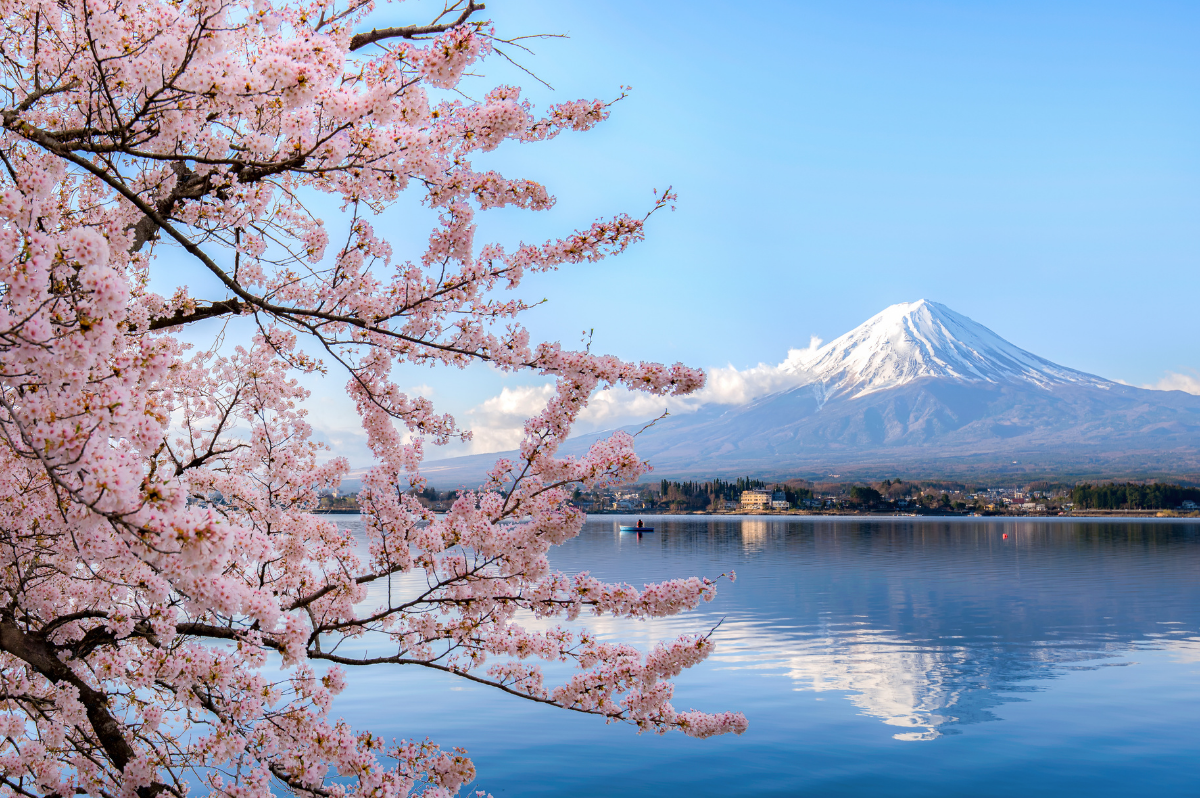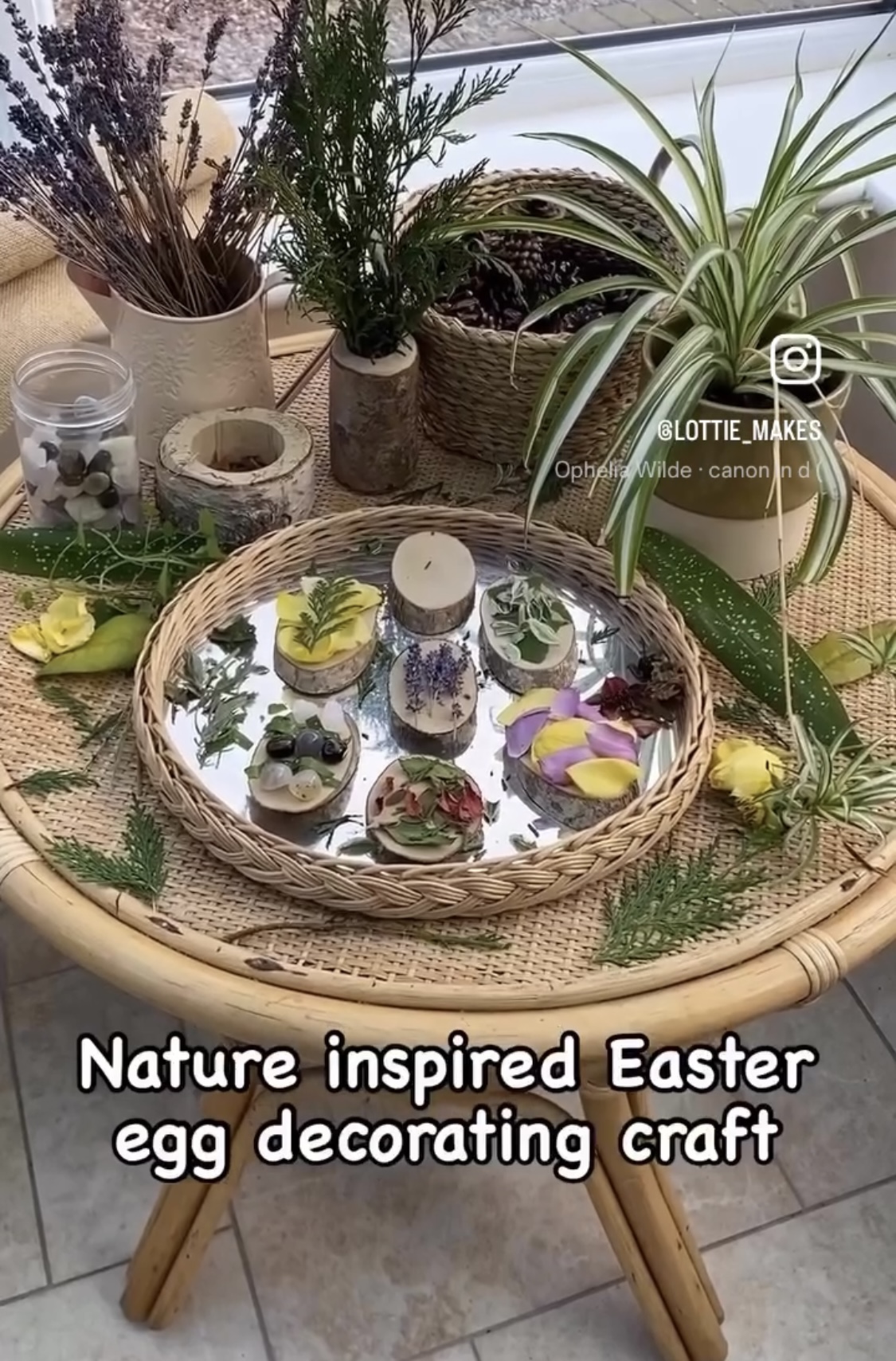Blog
“Strive to make everyday the best day of your life, because there is no good reason not to.” Hal Elrod
8 Spring Blossom Play Ideas!
The blossom is in full bloom here and so I wanted to share some of the best ways you can bring it into the children's play.
'The significance of the cherry blossom tree in Japanese culture goes back hundreds of years. In their country, the cherry blossom represents the fragility and the beauty of life. It's a reminder that life is almost overwhelmingly beautiful but that it is also tragically short. '
Homaro Cantu

Don't be too busy to rush past the blossom trees but instead let them be a remind that life is short but beautiful and to look up and notice them.
1. Look up
Look up at the blossom and see all of it's beauty. If possible go and lay under a blossom tree with the children and practice a moment of stillness. What do the children see, smell, hear and feel? Why not place a perspex mirror under the tree or some water play (always supervise) to reflect the blossom and provide an interesting perspective in the play.
It's also a wonderful sensory experience to take your shoe...
How to Raise a Wildling

his is a question I get asked by parents and teachers often. How do I enthuse my child with a love for nature? How can I get my child to enjoy being outside.
These are lots of suggestions I offer; How do we grow a wildling?
- Sharing our own enthusiasm and passion for nature. Our brains mirror (mirror neurons)those around us so our love for nature can be truly infectious for young children.
- Invite children to join you in the every day nature tasks you do. For example watering the plants, picking herbs to cook with and feeding the birds.
- Embrace the mud, the wet and the cold. Yes children will get muddy but they will wash. If we show our worries or concerns about them getting muddy they will pick up on this.
- Teach children how to get ready for the right weather. If children are cold or wet they will soon change their enthusiasm for being outdoors
- Join in with their play. Point out nature to them and be excited by the child’s innate curiosity in nature.
- Model curiosity in nature and ...
Easter in Denmark

Easter is big in Denmark. It kicks off the summer season after a long, dull Nordic winter, and the Danes go all in for it. a
For Danes Easter means being together with loved ones, relaxing and having fun making new memories.

Here are a few ways Danes celebrate Easter.
Decorate the Home
Like everywhere else in the world, the egg is a major symbol of Easter, also in Denmark. It symbolizes new life and a new beginning. For decoration using egg shells, you can blow out your own egg by making a tiny hole at the bottom and top with a needle. You might decorate some hard boiled eggs and have them on the side to admire. You could collect some twigs from your garden and hang home made salt dough decorations on them too.

Spring flowers are also collected and displayed inside the home to embrace the element of nature.
Get Together
During Easter, Danes celebrate mostly the arrival of springtime and with Maundy Thursday, Good Friday, Easter Sunday and Easter Monday being national holida...
Play Based Learning This Easter
With Easter upon us shortly it's easy to get back into the habit of dressing each area of provision for the celebration.

Instead focus on leaving a few hooks in your adult initiated sessions that will grab your children's interest and lead them curious to know more. It could be sharing an Easter story for instance and then having one or two areas of your provision with provocations in linked to this. This then invites the child to explore and learn more. It also means that children that don't want to explore this can still head into the areas of provision to develop their own lines of enquiry or take the lead on their own child led play.

Taking this approach also frees you as an adult up from spending so much time filling every area of provision with resources and instead can really prioritise your time and focus your efforts on the things that will make the biggest impact.
With this in mind I wanted to take the opportunity to share some of the provocations and hooks that I h...
International Day of Hygge

|
10 Ways To Embrace Nature This Valentines Day!
As you know from our Rewildong Wanderlust Child Nature Study Programmewe love supporting children's play through nature and the outdoors. Here are 10 nature play ideas for celebrating Valentine’s Day.
Head outside and look for heart shaped leaves. Find other nature to decorate these with and then take a photo. This can then be turned into a card.
Set up a natural maths provocation around the story of Clara Button and the Wedding Day Surprise.

Create a natural batch of Playdough by leaving out the food colouring. Pop on a board along with some flower petals, cake tins and cutters.

Set up an invitation to explore loose parts

Use magnetic tiles and nature to create hearts
Create a Valentines Day Shelfie like @_little.thinkers_

Make some Forest love potions


Make the words Love and decorate them with nature

Make a heart shaped nature wand

Make Woodland Love Tea

Set up a flower shop and practice the gentle art of flower arranging
Set up a senso...
Ice Play

We've has such a long cold spell here in the U.K that it feels as though we've been living under a sheet of ice now for quite a few weeks.
Instead of staying inside and being wary of the ice we've taken inspiration from Scandinavian pre-schools and headed out in the ice and cold.
During the winter months in Scandinavia months on end are often icy, cold and snowy. It's a way of life here and the mentality is that we can't just stop life because of it. Instead ice on the ground is an important lesson for young children to learn. How do they move on the ice? What do they need to wear on a very cold day? What will melt the ice? What's the best way to warm up on a freezing day? - All important life lessons!
As a family we've been getting well wrapped up and heading out into our local area. Visiting the moors and exploring the puddles on our street that have turned into ice. It's opened up lots of facinating discussions and experiments.
Here I share with you a list of other ways you...
Making Outdoor Play A Success on a Cold Day

“Oh i think it’s raining...we’ll just stay inside today”❎
Do you ever hear yourself saying these things?
In Denmark the children go outside every single day no matter what the weather and they get VERY harsh cold winters.
❄️We’re talking temperatures of -14 degrees! Not only is it cold but the land is covered in ice and snow!
When speaking to educators in Denmark about time outside they tell me, “ We go outside every day no matter what the conditions. Our children need to learn how to move on the ice and how to wrap up warm as this is a way of life! We need to give the children life skills to help them thrive in this world.”
Birds

Birds
Don’t fill January with too many plans. Take time to watch the birds either from a window or while you're outside. Think about the questions your children ask or the comments they make. Use this as a starting point for a bird provocation.


- “A bird does not sing because it has an answer. It sings because it has a song. ‘Chinese proverb
Hum a tune, whistle a melody or sing your heart out.
Take some time this morning to listen to the bird song. Nature often reminds us how wonderful the world is even when things feel tough or out of our control.
Nature also reminds us that nothing is ever constant in this world and is forever changing. If time’s are hard for you right now know that this time will pass soon.
- Survey the birds in your garden or your local area with a bird spotting sheet
- Make pine cone bird feeders
- Get up early and listen to the bird song with a mug of hot tea
- Set up a story crate around birds with books and small world props.
- He...
Open Ended Snow Day Play!
I don't know about you but I just love the snow! Waking up and seeing the snow flakes falling brings so much excitement. I also love the softness that we experience when it snows and the way everywhere seems to quiet. Taking a walk and hearing the crunch underfoot, perhaps hearing the tweet of the birds in a nearby tree and noticing the snow sitting carefully on the branches.
I have been very fortunate to go on some wonderful adventures to Northern Finland and Canada and even as an adult the snow has truly fascinated me. Like the way it sticks to the trees in the -10 temperatures! I loved how in Finland the streets were given a cosy glow in the middle of winter with candles dotted in the snow lighting the way. So when it was snowing here in Bradford today I just couldn't wait to bring in some of that joy of snow into our day.
In today's blog I wanted to share three ways you can embrace some open ended snow play this winter.
Set up a snow kitchen
Here we take the good old ...













